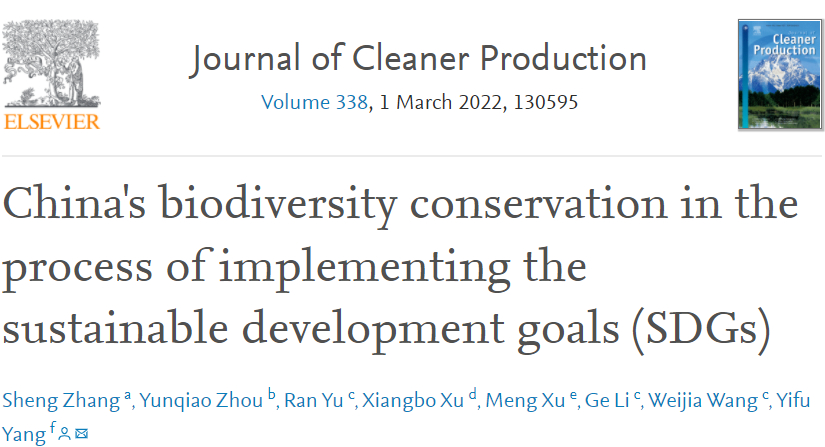Biodiversity is an important indicator to evaluate the sustainable development of human society. To protect the biodiversity on earth, the United Nations Sustainable Development Goals (SDGs) have set precise requirements. Biodiversity protection and development are closely linked, and its goal is to protect biodiversity in a way that does not destroy essential habitats and ecosystems. China is one of the countries with the wealthiest biodiversity globally, and it is also one of the countries with the most severe threats to biodiversity. This research analyzes the characteristics of China's biodiversity and the threats it faces, and the biodiversity conservation work that China needs to carry out, and pointed out that in the context of COP15 and climate change, the rational development and continuous use of biological resources is an urgent matter related to the sustainable development of humankind. This research synthesizes the most advanced progress on biodiversity in recent decades. Further, we selected more than 20 indicators related to biodiversity and analyzed the current biodiversity situation in China by using spatial panel measurement and clustering methods. The results show that: 1) coastal provinces in China have more invasive species than inland provinces, and the number of invasive species in inland areas decreased with the distance from the seaside; 2) urbanization, including population crowding and land development, have a noticeable negative impact on biodiversity, with the values of −0.09 and −0.46, respectively; 3) The influence coefficients of temperature and precipitation on biodiversity are both significantly positive. Suitable temperature and abundant rainfall are conducive to biodiversity improvement. Based on these results, three policy directions for protecting biodiversity in China or globally were proposed.
Corresponding author: Yifu Yang, yyang1991@ruc.edu.cn




